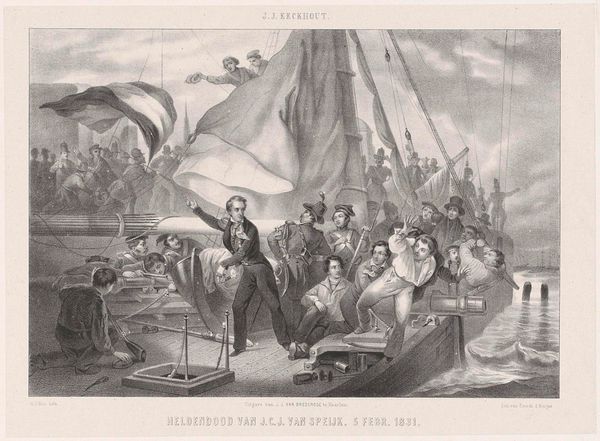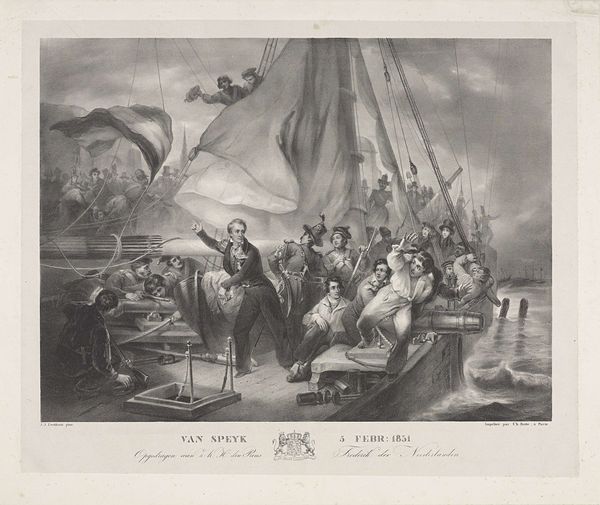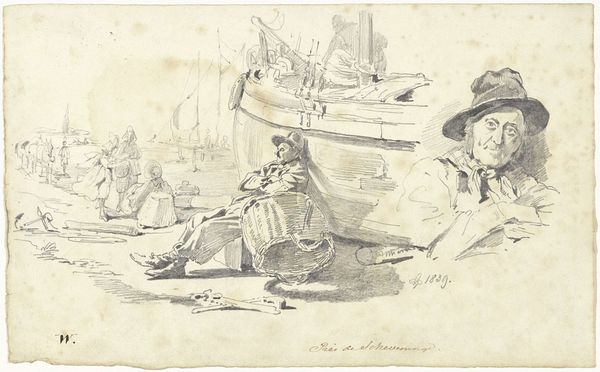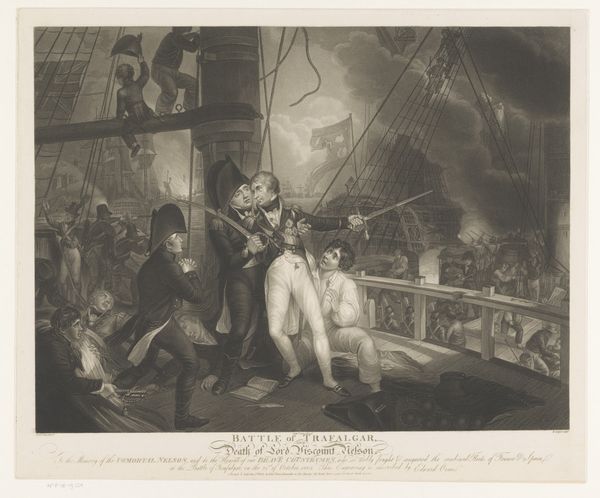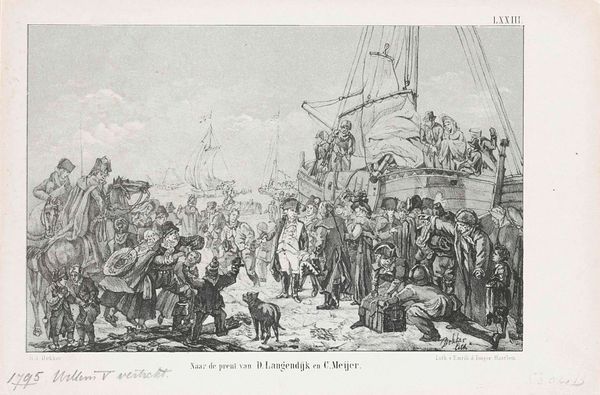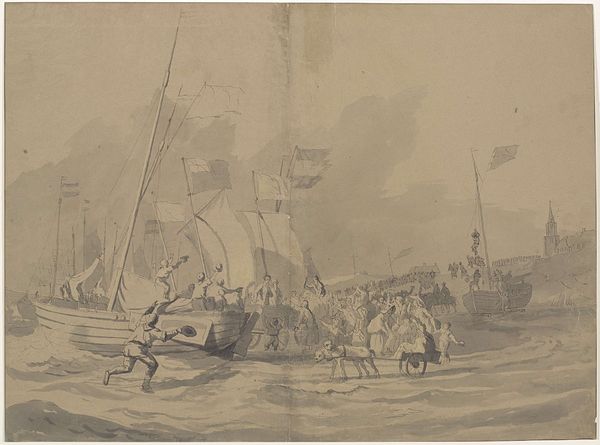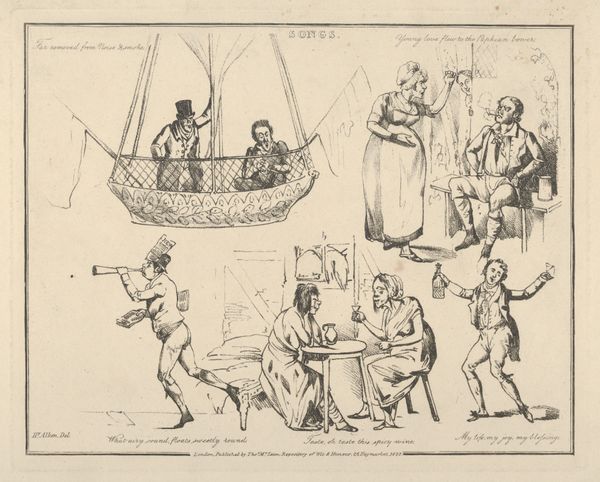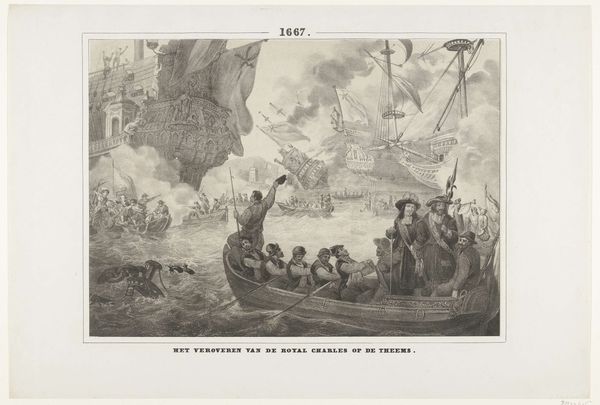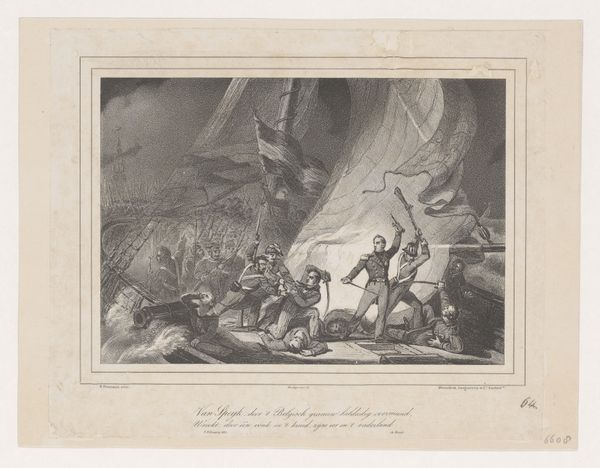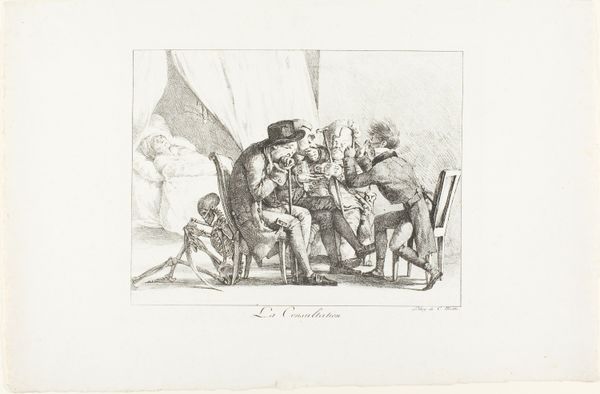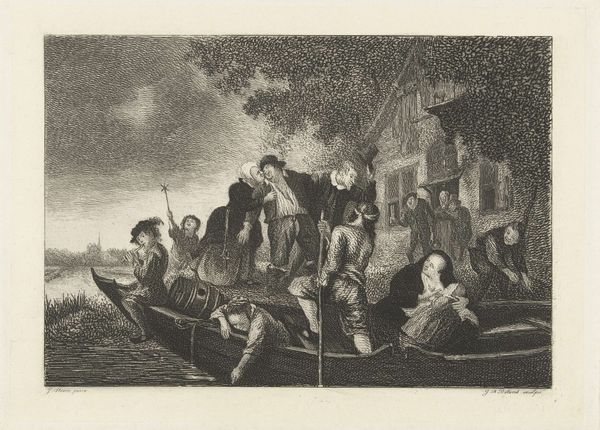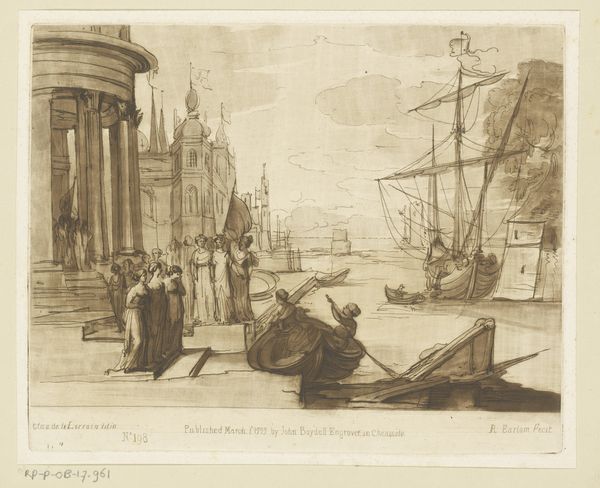
Jan van Speijk op het punt de lont in het ruim te gooien, 1831 1853 - 1861
0:00
0:00
Dimensions: height 163 mm, width 241 mm
Copyright: Rijks Museum: Open Domain
Editor: This is "Jan van Speijk op het punt de lont in het ruim te gooien, 1831", a print by H.J. Dekker, dating from 1853 to 1861. It’s a busy image; a lot is going on with all the figures and details on the ship. It’s hard to tell where to focus. What are your initial observations of the composition? Curator: Immediately, the linear quality strikes one. The artist, H.J. Dekker, exploits line to create depth and to lead the viewer's eye across the chaotic scene. Note the masts stretching vertically, countered by the more or less horizontal cannon and bodies of the sailors. The sharp contrast between light and dark – evident in the sails and the shadows – lends a dramatic flair. Editor: That’s a great way of breaking it down. I hadn’t thought about how the lines directed my gaze. Does the density of figures influence the artwork’s formal qualities, then? Curator: Precisely. The crowded composition is critical. The artist has used it to emphasize the imminent action. Can you see how the placement of figures contributes to the feeling of tension? Notice how Dekker arranged the figures to guide our eye back toward the central figure who's about to light the fuse. The dynamism created thereby. Editor: Now I see it. So the arrangement isn't arbitrary; it's carefully constructed to create a specific visual experience and draw us into that crucial moment. I can definitely see the movement you’re referring to now, knowing that is part of the purpose. Thanks for making that so clear! Curator: You are most welcome. Indeed, this close formal analysis helps unveil how Dekker crafted this narrative through shape, line and form.
Comments
No comments
Be the first to comment and join the conversation on the ultimate creative platform.
